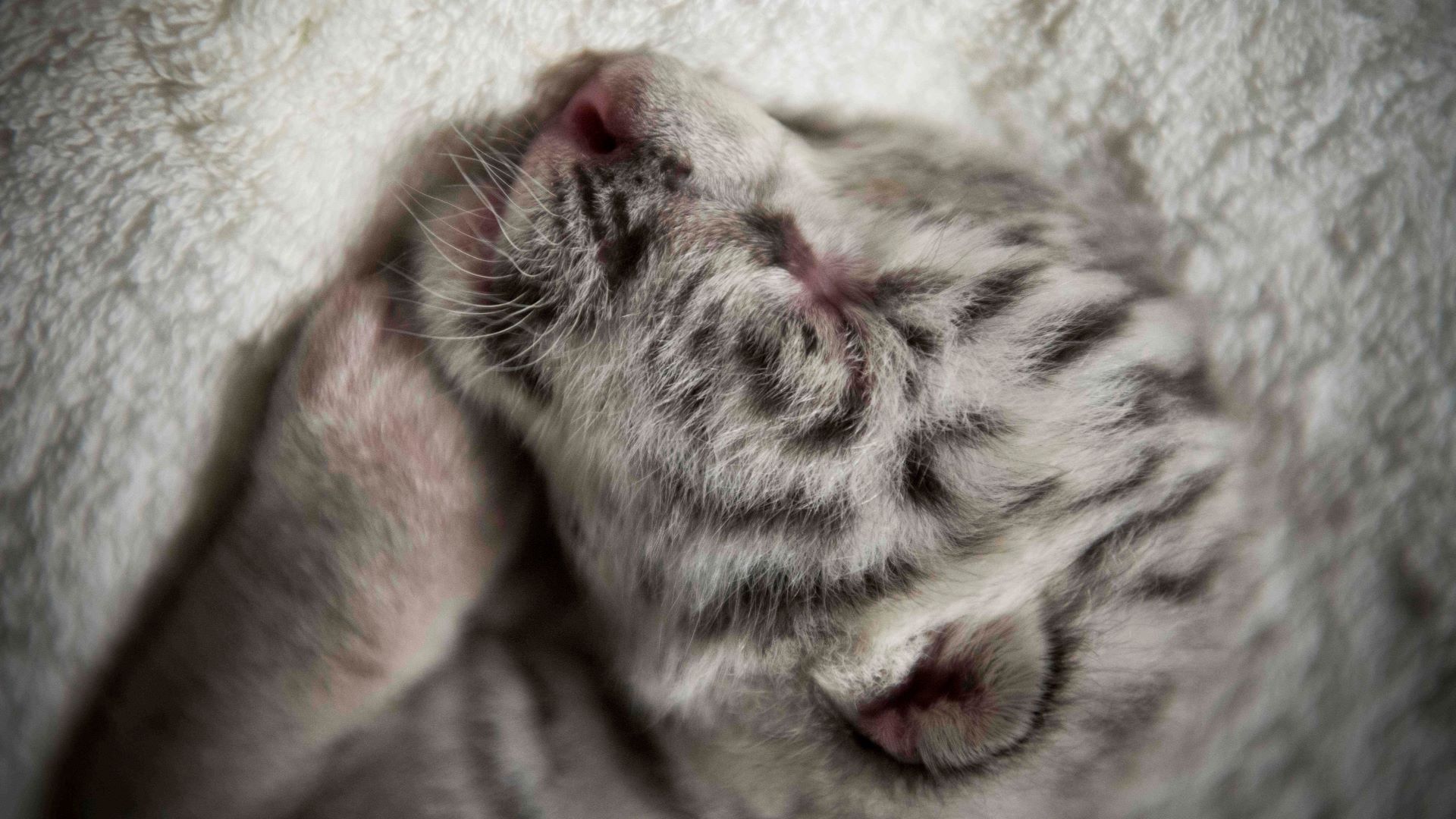The strange history of white tigers
How could two orange tigers produce a white cub?

A rare white tiger cub was born at a zoo in Nicaragua just over a week ago and is being raised by humans after its mother rejected it, AFP news agency reported.
The cub, named Nieve ("snow" in Spanish), is white, but both of its parents are orange Bengal tigers from India. So how did they produce a pale white cub?
Related: In photos: The tigers of India's Bandhavgarh tiger reserve
What are white tigers?
White tigers are a rare form of the Bengal tiger (Panthera tigris tigris), a tiger subspecies found in India, Bangladesh, Nepal and Bhutan. They are not a separate species. Rather, the pale color is the result of a recessive mutation in a single gene, meaning two copies of the gene are needed to express the trait, Live Science previously reported.
In 2013, a team of Chinese researchers discovered that a pigment gene called SLC45A2 was responsible for the trait and published their findings in the journal Current Biology. White tigers carry a variation of this gene that prevents the production of red and yellow pigments, which combine to produce the orange coat worn by regular tigers.
Without these pigments, tigers are born white. The variation does not inhibit black pigments, so the white tigers still have black stripes.
Where do white tigers come from?
White Bengal tigers were once found in the wild, but only rarely. The oldest recorded sighting on the Indian subcontinent dates back to the 1500s, and the last known free-ranging white tiger was shot in 1958, according to the 2013 study, published in Current Biology.
Get the world’s most fascinating discoveries delivered straight to your inbox.
Today, white tigers are found only in captive settings, such as zoos and safari parks. They appeared on Netflix’s popular "Tiger King" series for example. Almost all captive white tigers descend from a male named Mohan, who was captured from the wild in central India as a cub in 1951.
Mohan and his descendants were deliberately inbred to increase the chances that the gene variation carrying the white-fur mutation would be passed on.
Inbreeding of white tigers kept the mutation alive in the captive population around the world. But this practice of deliberate inbreeding led to a range of health problems, such as premature death, stillbirth and deformities, the study authors wrote.
As zoos began to focus more on breeding endangered species as a means of safeguarding their wild populations, these health issues and the general lack of genetic diversity within the white tigers became a problem.
In 2011, the Association of Zoos & Aquariums stated that its accredited institutions should not intentionally breed rare color "morphs," such as white tigers, because of their health issues and their impacts on breeding programs.
The mutation, however, still exists in captive tigers, and because the trait is recessive, even individuals that are not white can carry the mutation. In the Nicaragua zoo, Nieve's great grandfather was white. Both of Nieve's parents carried the recessive gene, even though they were orange, but Nieve was born with white fur because she inherited a copy of the mutation from both parents.
Are white tigers endangered?
Tigers are an endangered species, and their population is declining, according to the International Union for Conservation of Nature. This includes Bengal tigers, of which there are fewer than 2,500 individuals left in the wild.
As white tigers are only a variation of the Bengal tiger, and not a subpopulation or subspecies, they are not considered a separate group of endangered animals. However, the research team that identified the gene variation argued that this trait is worth protecting.
"The white tiger represents part of the natural genetic diversity of the tiger that is worth conserving,” co-author Shu-Jin Luo, a conservation biologist at Peking University in China, said in a statement. Luo and her colleagues advocated a proper captive management program to maintain a healthy Bengal tiger population that includes both white and orange tigers.
Originally published on Live Science.

Patrick Pester is the trending news writer at Live Science. His work has appeared on other science websites, such as BBC Science Focus and Scientific American. Patrick retrained as a journalist after spending his early career working in zoos and wildlife conservation. He was awarded the Master's Excellence Scholarship to study at Cardiff University where he completed a master's degree in international journalism. He also has a second master's degree in biodiversity, evolution and conservation in action from Middlesex University London. When he isn't writing news, Patrick investigates the sale of human remains.
